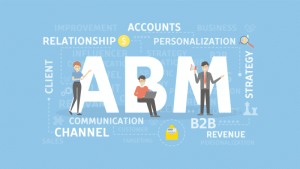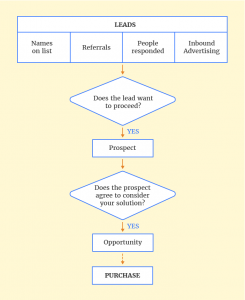I have this friend — let’s call him Josh. He’d been at his job for a year, even though he didn’t love the work he was doing. The job offered Josh good pay, security and professional experience. But, ultimately, it wasn’t the kind of work he wanted to do long-term.
His job offered a promotional path, but only gave employees a chance to apply for a promotion once a year. The promotion charts the same course for each employee in Josh’s role. And, really, the promotion is a title shift with a bit more responsibility. He was set on a path to receive his first promotion this year, with assurance from his manager that he would get it.
But, when time came around for the promotion, they decided not to offer it to Josh. And, they gave little explanation as to why. At this point, what would motivate Josh to stay in his role? Is it worth waiting another year to apply again for a promotion in a career path he’s not actually interested in?
Newsflash: It wasn’t worth it. He left.
What motivates people to stay in their jobs when things get tough or when they don’t get the promotion they expected? It could be the mission of the work, the coworkers, investment into a project, the pay, the perks. I’ll admit it’s a bit of a loaded question — there are a myriad of reasons that people choose to stay with a job through thick and thin.
But, I can tell you, free food and a free gym membership only go so far when you’re dissatisfied at work. A pay increase doesn’t always cut it. If your work is both strenuous and there isn’t a clear career path, it’s more likely you’ll start shopping for different work within a couple years.
The Importance of Providing an Employee Development Plan
With nearly 70% of the American workforce disengaged at work, retaining talent is a primary concern for most companies. Employee engagement and retention are closely linked. Gallup’s State of the American Workplace report captures the link between engagement and retention in a nutshell:
“Engaged employees are more likely to stay with their organization, reducing overall turnover and the costs associated with it. They feel a stronger bond to their organization’s mission and purpose, making them more effective brand ambassadors. They build stronger relationships with customers, helping their company increase sales and profitability.”
Sounds pretty great, right? Think about how this translates in your contact center.
According to research out of McKinsey & Company, engaged and satisfied contact center employees are:
- 8.5x more likely to stay than leave within a year
- 4x more likely to stay than dissatisfied colleagues
- 16x more likely to refer friends to their company
- 3.3x more likely to feel extremely empowered to resolve customer issues
Considering Josh’s experience at his job, it’s clear what would have helped retain him. Without a career path, at this point, what’s keeping him engaged in his work or from looking for a new job?
Creating an employee development plan and offering examples of career paths are vital for both engagement and retention. Especially in the contact center.
Contact centers are notorious for high turnover rates. And, in North America, the direct cost of replacing a contact center agent, including the cost of screening, recruiting, interviewing and training an agent is more than $ 12,000. Turnover is incredibly costly!
I’m sure I’m preaching to the choir here, but retention and engagement within your contact center is likely top of the mind for a manager like yourself. Fighting those turnover costs and rates can feel daunting. But, as we saw with Josh, his choice to stay at his job could have looked very different if his managers invested in his individual career development hopes and dreams.
Employee Development Plans in your Contact Center
An employee development plan documents the goals, skills and objectives an employee needs to accomplish in order to grow in career development. You, manager, work closely with each employee to create these plans.
You sit down with each employee on your team and identify what skills and resources they need to reach their goals. Then, you work with each agent to ID how they can bring value to the organization and develop valuable skills for their own career.
When you take time to consistently understand how your contact center agents want to grow, you’re proactively managing their job satisfaction. When you align goal setting with each employee’s professional development plan, you coach and train with a clear purpose.
And, just think how much happier this will make your customers! When your agents are more satisfied, engaged and empowered to do their work, your customer’s experience inevitably gets better. You know the saying: happy agents make happy customers.
Every action as a manager can be more intentional to support your employee’s personal goals.
What does an Employee Development Plan Look Like?
Now that I’ve (hopefully) convinced you that employee development plans are valuable, let’s walk through three examples of an employee development plan you can use in the contact center.
1. A Performance-Based Plan
A performance-based plan is very much like a report card in school. Either you hit the metrics and drive home important business outcomes or you don’t. Performance-based plans help you measure the success and failure of your employees so you can clearly see their strengths and weaknesses. Although these kinds of plans are valuable, you don’t want them to be the only development plan available to your team.
You know that many managers and leaders use metrics and KPIs to measure performance in contact centers. They help you sense where you’re falling short as a team, where your customers are satisfied or dissatisfied with your level of service.
Failing to reach objectives sounds negative. But, a performance-based development plan can be a practical starting point to draw clear boundaries around success. Metrics can tell important stories about success and failure, but you won’t want your agent’s success to be solely dictated by numbers.
While some employees may feel more motivated by hitting KPIs than others, it’s worth considering whether this kind of scorekeeping method discourages or drives your agent.
2. Management by Objectives Plans
As I mentioned, performance-based plans can only provide a singular glimpse of career development. If you’re using performance-based plans, make sure you’re digging deeper to understand the larger picture. When you do so, you’re managing with bigger objectives in mind.
Management by objectives plans still review whether or not agents met their goals. But, these plans go into more detail about employees’ strengths and weaknesses. They mix positive and constructive feedback to help agents see where they excelled, even if they didn’t hit every goal or KPI. It’s important to ask employees what their goals are and what obstacles might be in their way. Sometimes low performance isn’t due to lack of ability.
For example, you have an agent named Rachel. Rachel is struggling with her First Contact Resolution metric. When you sit down with Rachel to discuss why this metric is low, you find out that Rachel is struggling with navigating your knowledge base system to find the answers for your customers. She is lacking product education and is getting hung up on your documentation system.
But, you see that Rachel’s CSAT metrics are still positive. All the customers she served noted that, though they didn’t get a resolution in one interaction, she was positive and empathetic. And, she was prompt to respond back with answers after-the-fact. Even though Rachel missed an important KPI, she still met her key objective: helping the customer and providing a positive service experience.
Now you have a clear path forward for where Rachel’s employee development plan needs focus and see where you can cultivate her strengths. Perhaps it’s time to clean up and optimize your documentation system so it can be a better resource for agents. Or, you can set up time for Rachel to meet with members in your product team or other more experienced agents to get more product training. Looking at more than just metrics helped you learn how you can help Rachel grow.
3. Succession Planning
Another example of an employee development plan is succession planning. This is where you focus on grooming agents and supervisors to step into positions of authority in your company. These plans focus on career development in the structure of your organization. This helps ensure that employees are prepared for promotions. And, it motivates employees to persevere in entry-level positions.
Succession planning is a more traditional kind of employee development. But, it’s hard to deny that internal promotional structures work well to retain employees over time. Gear your employee development plan toward succession planning. To do so, review your employees’ current strengths, weaknesses, knowledge and abilities. Then, compare them to the job duties required in higher roles in your company.
When you have a clear succession path set for employees, you can focus training and mentoring to prepare your team for these next-level roles. As a manager, identify the skills you need to uphold and foster these same skills in your agents. While you’re on a path to grow in the company over time, it’s good to identify agents on your team who could fill your shoes. Then, start coaching them to get there.
Succession-driven employee development plans provide clear milestones of achievement, giving everyone confidence for a smooth transition of power.
Business & Finance Articles on Business 2 Community
(48)






